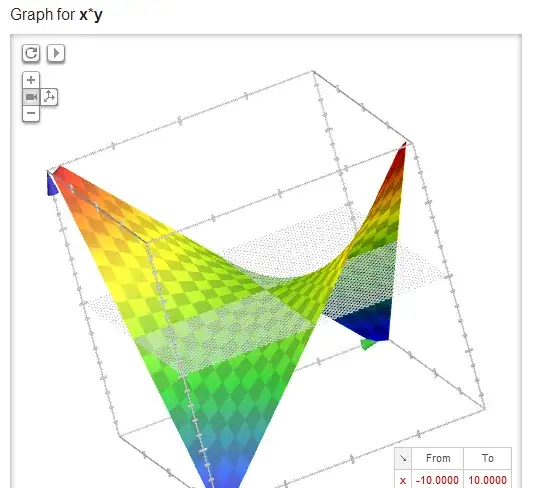Find the absolute minimum and absolute maximum of $f(x,y) = xy$ at $D = \left \{(x,y) \in R^2: 0\leq y \leq 1-x^2 \right \}$
It is helpful to sometimes look at a plot of the function.

Critical Points:
We have $f_x = y$ and $f_y = x$, hence, we find a potential critical point at $(x, y) = (0, 0)$.
We also have $f_{xx} = f_{yy} = 0$, and $f_{xy} = f_{yx} = 1$, thus, at the critical point, we have:
$$\det(\text{Hessian}) = f_{xx}f_{yy}-f_{xy}^2 = 0 - 1 = -1$$
Since $\det(\text{Hessian}) < 0$, we have a saddle point.
Boundary:
We have $0\leq y \leq 1-x^2 $, so we see:
- For $y = 0, x \in [-1,1] \rightarrow f(x, y) = 0$
- For $y = 1 - x^2$, we have $f(x, y) = x y = x(1 - x^2)$
Finding the derivative of $x(1 - x^2)$ and equating to zero, gives us a stationary point when $x = \pm \dfrac{1}{\sqrt{3}}$
From this we have:
- Absolute (global) maximum of $\dfrac{2}{3 \sqrt 3}$ at $(x, y) = \left(\dfrac{1}{\sqrt 3} , \dfrac{2}{3}\right)$
- Absolute (global) minimum of -$\dfrac{2}{3 \sqrt 3}$ at $(x, y) = \left(-\dfrac{1}{\sqrt 3} , \dfrac{2}{3}\right)$
Note: you could have also used Lagrange Multipliers as an alternate approach, but I am not sure you learned that yet as well as other approaches.
